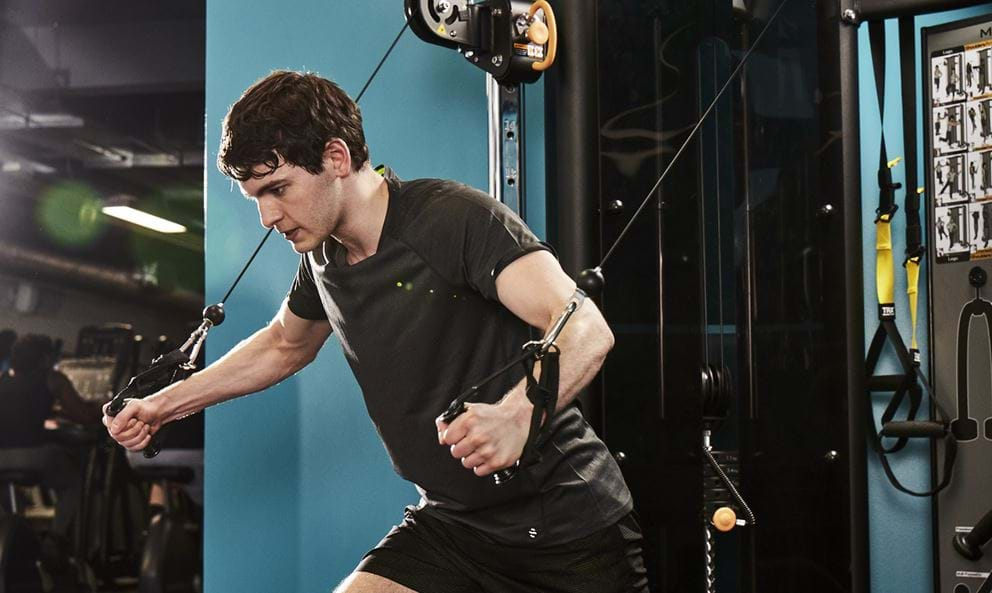A Beginner’s Guide to Cable Machines

Have you ever walked into a gym, turned around to inspect the various wondrous devices before you, and noticed something that just seems to make no sense whatsoever?
For a lot of people, the cable machine seems to be one of those great mysteries of the world. Ever-present, but beyond mortal understanding.
In this quick post, we’re going to try and shed some light on this shadowy bit of equipment.
How Does the Cable Machine Work?
The cable machine works in the same way as any strength building device; by providing resistance for your muscles to work against.
The only real difference between this and other machines or equipment, is that, in this case, weights are connected to cables via a set of pulleys. You train by moving the cables around, while they stay under constant tension against the weights. This means that your muscles are also under constant tension during an exercise. There is no “resting point” here, unlike with free weights.
Typically, there are two weight stacks, connected to two cables, with space in between for you to stand and train. Two outer pulleys will be adjustable so that the cable attachments can be fixed at different heights.
This allows you to do a surprising amount with the machine. You can pull the cables in pretty much any direction and still be working against the same resistance. Combine this with the different cable attachments available, and you’re pretty much only limited by your own creativity.
Beginner Exercises
Standing Cable Chest Press:
The standing cable chest press is a great exercise to work your pecs, shoulders, triceps and even abs. Think of it as the cable press version of a standard dumbbell press.
Carrying out this exercise is simple. The first thing to do is to set the two adjustable pulleys to about chest height. Then, make sure there’s an appropriate handle attachment on each pulley, and set your desired weight on each side (making sure both sides match).
Then, take hold of each handle, face away from the machine, and step forward until you feel tension in the cables, and the weights “un-rack” from their stacks.
Next, simply push the handles out in front of you for reps, like you would with a bench or dumbbell press. You’ll notice that the movement feels much harder to stabilise than most free-weight movements. That’s just a sign it’s working as intended.
Standing Cable Row:
The standing cable row is great for working the muscles of the upper back, specifically the lats. It will also put some decent tension on the biceps.
To setup the exercise, begin by fitting the rowing attachment (which will include two handles) to one cable. Set the weight, take hold of the attachment while facing the machine, and take a few steps back with your knees slightly bent and your arms held straight out in front of you, until the weight unracks.
From there, it’s as simple as pulling the attachment back to the middle of your chest for reps. Your shoulder blades should be retracted during the motion.
Cable Machine Squat:
This exercise is a bit unconventional, but can do a fantastic job of working the muscles of your legs without the risks that come from having a heavy bar with a tonne of weight resting across your upper back.
There are different ways of doing this exercise, but here’s one of the simplest:
Fix a straight bar attachment to one cable of the cable machine. Set the pulley to the lowest setting. Hold the bar in both hands, with an overhand grip, and step back until the cable is taught. Then, drop down and back into a low squat.
From there, press back up and slightly “out”, engaging the lower body muscles, and repeat for reps.


